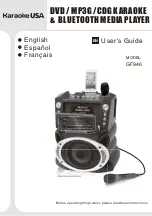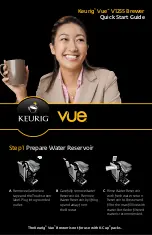
Specific hazards
Keep hands, hair, clothing and tools away from moving parts. For example:
-
Fans
-
Cogs
-
Rollers
-
Shafts
-
Wirespools and welding wires
Do not reach into the rotating cogs of the wire drive or into rotating drive components.
Covers and side panels may only be opened/removed while maintenance or repair work
is being carried out.
During operation
-
Ensure that all covers are closed and all side panels are fitted properly.
-
Keep all covers and side panels closed.
The welding wire emerging from the welding torch poses a high risk of injury (piercing of
the hand, injuries to the face and eyes, etc.).
Therefore always keep the welding torch away from the body (devices with wire-feed
unit) and wear suitable protective goggles.
Never touch the workpiece during or after welding - risk of burns.
Slag can jump off cooling workpieces. The specified protective equipment must therefore
also be worn when reworking workpieces, and steps must be taken to ensure that other
people are also adequately protected.
Welding torches and other parts with a high operating temperature must be allowed to
cool down before handling.
Special provisions apply in areas at risk of fire or explosion - observe relevant
national and international regulations.
Power sources for work in areas with increased electric risk (e.g. near boilers) must carry
the "Safety" sign. However, the power source must not be located in such areas.
Risk of scalding from escaping coolant. Switch off cooling unit before disconnecting
coolant flow or return lines.
Observe the information on the coolant safety data sheet when handling coolant. The
coolant safety data sheet may be obtained from your service centre or downloaded from
the manufacturer's website.
Use only suitable load-carrying equipment supplied by the manufacturer when transport-
ing devices by crane.
-
Hook chains and/or ropes onto all suspension points provided on the load-carrying
equipment.
-
Chains and ropes must be at the smallest angle possible to the vertical.
-
Remove gas cylinder and wire-feed unit (MIG/MAG and TIG devices).
If the wire-feed unit is attached to a crane holder during welding, always use a suitable,
insulated wirefeeder hoisting attachment (MIG/MAG and TIG devices).
If the device has a carrying strap or handle, this is intended solely for carrying by hand.
The carrying strap is not to be used if transporting with a crane, counterbalanced lift truck
or other mechanical hoist.
All lifting accessories (straps, handles, chains, etc.) used in connection with the device or
its components must be tested regularly (e.g. for mechanical damage, corrosion or
changes caused by other environmental factors).
The testing interval and scope of testing must comply with applicable national standards
and directives as a minimum.
13
EN
Summary of Contents for TPS/i Push
Page 2: ......
Page 20: ...20...
Page 21: ...System configurations 21...
Page 22: ...22...
Page 29: ...System components 29...
Page 30: ...30...
Page 43: ...Controls connections and mechan ical components 43...
Page 44: ...44...
Page 58: ...58...
Page 59: ...Installation conventional robot 59...
Page 60: ...60...
Page 66: ...3 3 Nm 2 43 lb ft 2 6 Nm 4 43 lb ft 3 66...
Page 74: ...2 74...
Page 79: ...WF 15i 30i R 2 WF 25i R 2 WF 25i 30i R L 1 WF 30i R L 2 WF 25i R L 2 79 EN...
Page 83: ...For steel inner liners 5 6 For plastic inner liners 5 6 83 EN...
Page 86: ...86...
Page 87: ...Installation PAP 87...
Page 88: ...88...
Page 91: ...Fitting the wire feed unit Fitting the WF 15i 25i 30i R PAP 1 2 3 4 91 EN...
Page 94: ...3 3 Nm 2 43 lb ft 2 3 Nm 2 21 lb ft 3 94...
Page 105: ...Connecting the interconnecting hosepack 105 EN...
Page 107: ...3 4 107 EN...
Page 108: ...108...
Page 109: ...Start up 109...
Page 110: ...110...
Page 114: ...3 8 6 7 9 3 1 2 2 5 4 4 3 4 5 5 6 1 2 3 4 114...
Page 119: ...Troubleshooting maintenance and disposal 119...
Page 120: ...120...
Page 129: ...5 6 7 8 9 10 129 EN...
Page 130: ...11 Removing the CrashBox PAP from the robot with mounting key 1 2 3 4 130...
Page 131: ...5 6 7 8 1 9 10 131 EN...
Page 134: ...134...
Page 135: ...Technical data 135...
Page 136: ...136...
Page 151: ...151 EN...














































